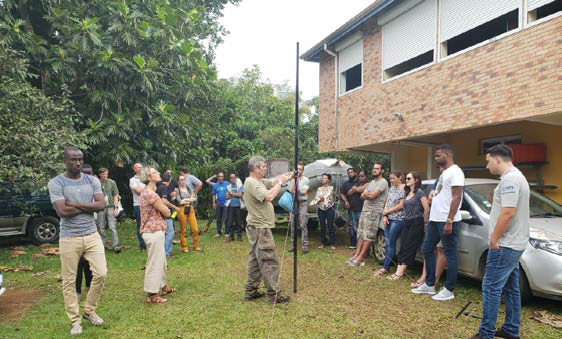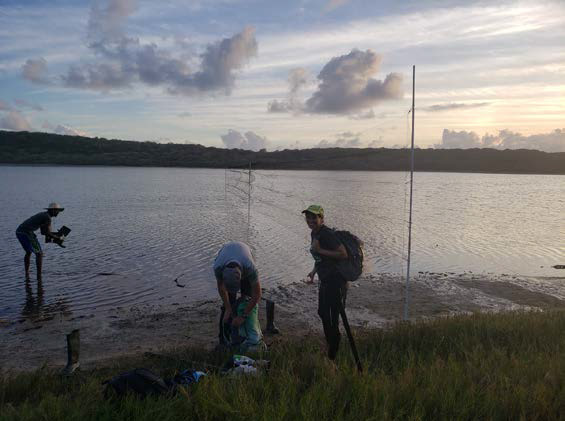Study the birds to better understand them
To better understand the avifauna of the French West Indies: that is one of the goals of the French Office For Biodiversity (OFB), which encompasses the French Agency for Biodiversity (AFB) and National Office For Hunting And Wildlife, as of January 1, 2020. One of the ways to improve our knowledge about these birds is by banding them, and the OFB organized a training program on March 9-13 2020 in Guadeloupe. Focused primarily on the banding of shore birds, this training was important for Saint Martin, an island where the salt ponds have numerous and diverse avifauna. Led by two specialized ornithologists from the French National Museum of Natural History (MNHN) — which manages the issuing and fabrication of the bands, and maintains the only national registry for the identification of these birds —the goal of this training was to give the participants the theoretical and practical knowledge necessary to contribute locally to the regional study of shore birds, and to better understand the birds in the French West Indies. At the same time, the Réserve Naturelle agreed to installation of a radio antenna, which will record the passage of birds—primarily migratory species—thanks to a beacon that covers a diameter of 18 kilometers, as past of the international scientific project, Motus (see motus.org). Funded by BirdsCaribbean, this program, which is popular in the USA, Canada, and Europe, is limited in our region for the time being to the islands of Puerto Rico and Barbados, as well as French Guyana. The installation of two antennas is planned, one on Petite-Terre in Guadeloupe, and the other in Saint Martin. This radio system, which is much less costly than a GPS, is well adapted for birds and features a small harness with a miniature transmitter placed on the birds, which can be removed after several weeks of use, once their movements have been tracked. Locally, the same technology could be used to monitor various animal species.


















